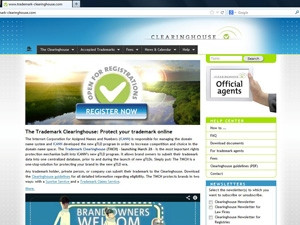
The Trademark Clearinghouse, a mechanism to alert brand-holders when someone tries to register a domain that matches a registered trademark, has been set up as part of the Internet Corporation for Assigned Names and Numbers' (ICANN's) new generic top level domains (gTLDs) programme.
Operators of new gTLDs will be responsible for implementing certain rights protection mechanisms, supported by the Trademark Clearinghouse. The recently-opened Clearinghouse allows brand owners to submit their trademark data to a centralised database before and during the launch of new gTLDs.
ICANN's board of directors voted in June 2011 to approve the introduction of the new gTLD programme that allows Internet address names to end in almost any word, in any language.
The decision, which was the culmination of six years of discussion, allows for a dramatic increase in the number of gTLDs. There were previously only 22 gTLDs, which include .com, .org and .net.
Cyber squatters
Vicky Stilwell, director in Edward Nathan Sonnenbergs' intellectual property department, explains the Clearinghouse will deal with online infringement and cybersquatting that could occur as a result of some 1 900 gTLDs that are likely to be launched during the course of 2013, some as early as May.
The new gTLDs include domains such as .accountant, .attorney, .capetown, .finance, .news, .shop and .zulu.
According to a prelaunch presentation, the trademark claim works by notifying the holder when a domain name matching the record is registered, and can be turned on or off on a per label basis. There is also a dispute resolution process if third-parties of trademark-holders do not agree with the verification, or there is new information that has an impact on a valid trademark record.
For an annual fee, trademark owners can register their brand with the Clearinghouse for a year, or three or five years. Stilwell notes registration with the Trademark Clearinghouse is not the same as domain name registration, in that it does not create any rights or prove any rights.
Stilwell says registration enables the trademark owner to make use of two mechanisms that have been created. Under the first, trademark owners can register their trademark as a domain name during the "sunrise period" for each new gTLD.
The sunrise period is a pre-launch phase providing mark-holders the opportunity to register domain names in a top-level domain before registration is generally available to the public.
"This will give them preferential registration right, as they can register their trademark as a domain name before the general public put in their applications. This is seen as a significant benefit by many companies, and one report suggests that six out of 10 major consumer brands see this as something they want to participate in," Stilwell explains.
In addition, trademark owners will be notified of any third-party applications to register the same trademark as a domain name that occur during the first 90 days of general registration for each gTLD. "This obviously puts trademark owners in a position to take whatever competitive or legal action that they feel is appropriate," says Stilwell.
Eligibility
Those who can participate are trademark-holders and agents who act on behalf of those who own a trademark. Trademarks that are accepted include nationally or regionally registered ones, those validated by a court, those protected by statute or treaty, and trademarks that are intellectual property, as determined by the registries.
Trademarks that are not accepted are those that start with a "dot" or those that have been cancelled or invalidated. Intellectual property that cannot be represented within the technical limitations of the system are also not accepted, and neither are marks that are not "at least of national effect".
Trademarks can comprise letters, words, numbers and special characters, as long as the characters in the trademark record are in the same order as on the certificate. The information that is needed to register includes the registration number and date, jurisdiction, description of goods and services, and information about the trademark-holder as well as the status of the holder.
According to the presentation, marks are subject to a verification process.
Share